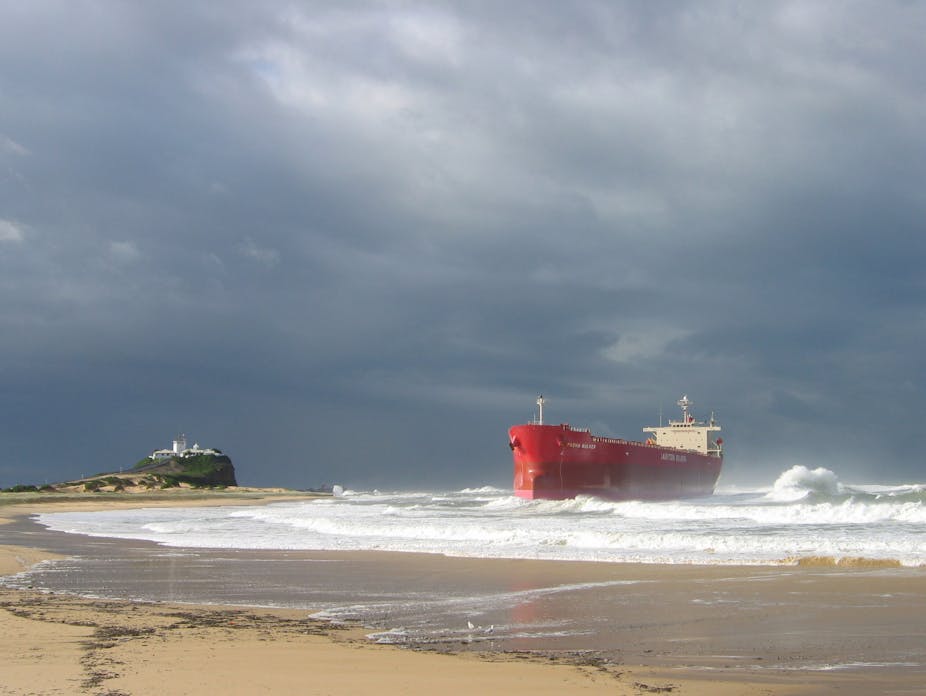A warmer climate is likely to result in fewer large waves along Australia’s central east coast, according to Bureau of Meteorology research that predicts a decline in the frequency of storms known as East Coast Lows.
However, the storms and large waves that do occur could potentially become stronger, and rising sea levels are likely to increase the impacts of these waves on coastal regions.
Large wave events
Large waves are one of the defining features of the east coast. They can cause severe impacts on coastal communities, such as erosion and inundation, but are also important for recreational activities such as surfing.
In June 2007, a bulk coal ship called the Pasha Bulker ran aground on Nobbys Beach in Newcastle during an East Coast Low. The Insurance Council of Australia estimated damages at about A$1.5 billion from this single storm.
Our new research shows that East Coast Lows are the dominant cause of large waves in eastern Australia, based on measurements of wave height from ocean buoys at Coffs Harbour, Crowdy Head, Sydney, Port Kembla and Eden. These storms have more of an effect in this region than tropical cyclones, which typically occur from November to April, whereas large waves happen more often in winter along this part of the East Coast.
Consistent predictions
Our group at the Centre for Australian Weather and Climate Research is the first to have produced highly consistent results across a range of climate models for projected changes to waves caused by storms in this region. We did it by looking at how ocean waves relate to conditions in the atmosphere at heights above about 5 km. At these heights, storms are typically larger than they are down at surface level. This means that the new method is well suited to the analysis of storms using global climate models, because these models can provide a good representation of the large-scale features of the Earth’s climate.
The 18 models used in our study clearly show that increasing greenhouse gas emissions is likely to cause East Coast Lows to become less frequent. About 40% fewer East Coast Lows are projected to occur towards the end of this century if greenhouse gas concentrations continue to increase. In contrast, if greenhouse gas concentrations are stabilised this century, then only about 25% fewer East Coast Lows are expected to occur.
Impacts on coastal communities
While fewer large waves may be unwelcome news for some surfers, changes to these events will have a broad range of likely implications for coastal communities.
Future changes to the occurrence of East Coast Lows are also likely to have an impact on rainfall, and as a consequence, on water availability and flood risk in this region. These storms account for a significant proportion of the heavy rainfall events that are important for water availability along the central and southern eastern seaboard.
As rainfall is influenced by a wide range of different factors, with East Coast Lows being one of these factors, it is challenging to project future changes with a high degree of confidence in some cases. Uncertainty in future water availability remains a complex challenge for natural resource management.
However, this study shows that the influence climate change will have on East Coast Lows, and their impacts on coastal communities and ecosystems, is becoming clearer.

